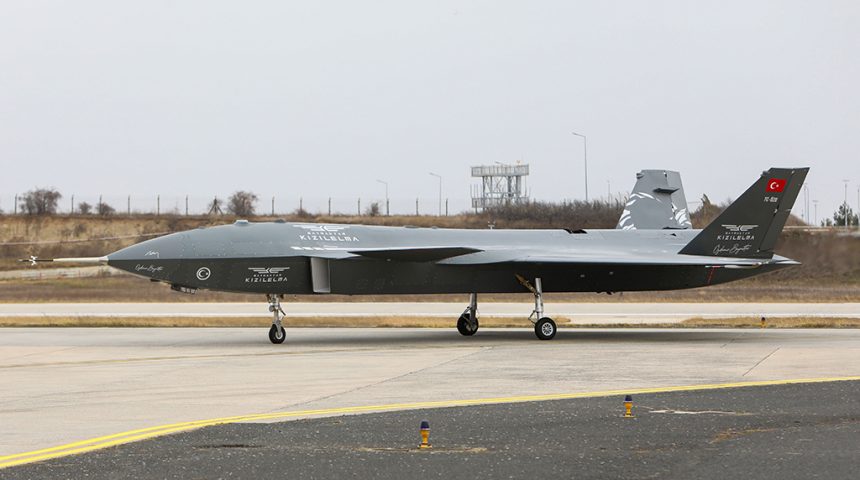The Bayraktar Kizilelma drone has successfully completed the first autonomous taxi and take-off roll test.
Baykar, the Turkish aerospace company that produces the Bayraktar TB2 Unmanned Aerial Combat Vehicles which have played a starring role both in the Second Nagorno-Karabakh War and in the Ukrainian war, has started the first ground tests of its new Kizilelma drone. The tests were carried out at the Akinci Flight Training and Test Center in the northwestern province of Tekirdağ’s Çorlu district, where the drone, “Turkey’s first unmanned fighter aircraft developed nationally”, successfully completed the first autonomous taxi and take-off roll test ahead of a maiden flight expected next year.
The first ground tests were directed by Selçuk Bayraktar, Baykar’s chief technology officer, who posted some interesting footage of the Kizilelma on Nov. 20, 2022.
#KIZILELMA ✈️🍎🚀… pic.twitter.com/MoAxNF0pZ6
— Selçuk Bayraktar (@Selcuk) November 20, 2022
The new drone is interesting for several reasons. The most obvious one is the shape, that immediately reminds the one of the Chinese Chengdu J-20 Mighty Dragon stealth fighter aircraft with delta wing, canards and canted vertical stabilizers.

In this respect, according to Baykar, the new drone will combine LO (Low Observability) and aggressive maneuvering capability, making it able to carry out a wide array of missions currently undertaken by manned fighter aircraft.
Gökyüzüne az kaldı…
Bayraktar #KIZILELMA, ilk otomatik taksi ve koşu testini başarıyla tamamladı. ✈️🚀🍎
Bayraktar KIZILELMA successfully completed the first autonomous taxi and takeoff roll test.#MilliTeknolojiHamlesi 🌍🇹🇷 pic.twitter.com/qhhmBV2THA
— BAYKAR (@BaykarTech) November 20, 2022
According to Baykar, the Kizilelma Fighter UAV will be able to take off and land on short-runway aircraft carriers too: the plan is probably to operate drones from the Turkish Navy’s Anadolu amphibious assault ship, that is equipped with a “ski jump“. However, a significant review of the landing gear would be required to operate the drone from small-deck aircraft carriers, since the one of the first prototype appears to be too “thin” to sustain the impacts of arrested landings.
Another area where improvements will need to focus is the power plant one: unlike China’s J-20, the Kizilelma will be equipped with a single engine. While we already know the drone will get a different turbofan moving forward, the Fighter UAV we have seen undertaking ground tests in the footage circulated online thus far features an exposed exhaust nozzle that is definitively not stealthy and will need a fix sooner or later.
That being said, according to Baykar, the Kizilelma will have a 500 NM combat radius, 35,000 feet operational altitude, a 5 hours endurance, a 0.6 Mach cruise speed with a top speed in excess of Mach 1. Other interesting figures are the MTOW (Maximum Take-Off Weight) of 6 Tons and 1.5 Tons of payload capacity. It will be equipped with an AESA radar and will be able to carry domestic air-to-air missiles as well as air-to-ground PGMs (Precision Guided Munitions).

It’s not clear whether the Kizilelma will act as a Loyal Wingman (i.e. controlled from another aircraft acting as “mothership” in a manned-unmanned teaming scenario) or be more autonomous in its mission. Whatever, following the notoriety acquired on the field thanks to the successes of the TB2, the development of a new highly maneuverable stealthy fighter UAV consolidate Turkey’s position as the rising drone power in the international arena.









